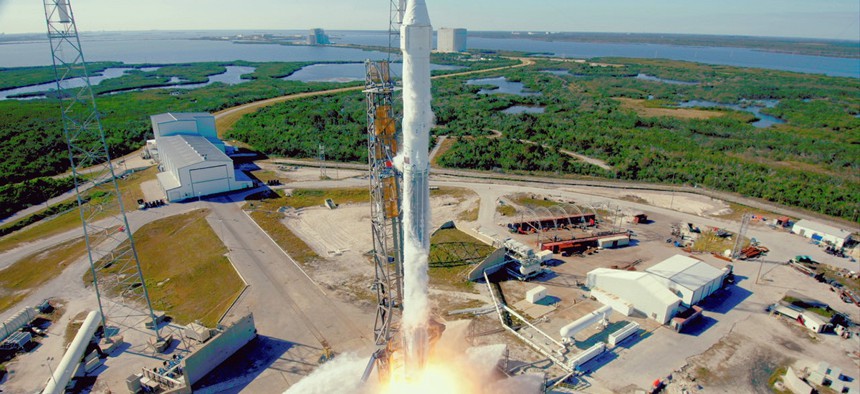Watch SpaceX Launch its First Reusable Rocket to the International Space Station

The SpaceX Falcon 9 rocket with the Dragon spacecraft launches from Space Launch Complex 40 at Cape Canaveral, Fla., on Friday, Dec. 15, 2017. NASA/AP
This is the first time NASA has approved the use of a previously flown rocket booster on a mission to the space station.
Elon Musk’s space company launched its fourth previously flown booster rocket today (Dec. 15) in a mission to the International Space Station. Then, while a Dragon spacecraft carried more than two tons of research and supplies to the orbiting lab, the booster attempted to return to land at Cape Canaveral for future re-flight.
Lift-off happened 10:30am US EST. You can watch all the action here:
This is the first time NASA has approved the use of a previously flown rocket booster on a mission to the space station; this one flew to space for the first time in June 2016. The US space agency has allowed SpaceX to fly recovered Dragon spacecraft back the lab before, and the vehicle on this mission is also a veteran, having made the trip to 254 miles (408 km) in altitude on a 2015 mission. The US government is paying SpaceX billions of dollars to carry supplies to the station. This will be the thirteenth attempted mission since 2012.
This also is the first time that SpaceX has flown a mission from this launch pad, called SLC-40, since it was largely destroyed in a fire that started during a test last year and also consumed a SpaceX rocket and a satellite. The mission faced delays for additional inspections of the pad, and to clean out the fuel system in the second stage of the rocket after impurities were detected in it.
After years of development, SpaceX is the only rocket company with a reusable first stage, which allows it to cut the cost of launch significantly. Competitors charge over $10,000 per kilogram of cargo in low-earth orbit, while a reusable SpaceX rocket can do the same for less than $2,000 per kg. So far, SpaceX has reused three of its recovered boosters to launch satellites, taking about six months to refurbish them. To truly drive down the cost of access to space, Musk has set a goal of turning around the boosters in just 24 hours.
This year, SpaceX has launched 16 successful missions, twice as many as last year, dominating the orbital launch business:
NASA’s decision to use a “flight proven” booster to service the space station is a sign of confidence in SpaceX from the agency, which has been a key patron and client for more than a decade. NASA is now officially under orders from president Donald Trump to return to the moon, but success will likely require partnerships with private companies that are working to make access to space cheaper.



